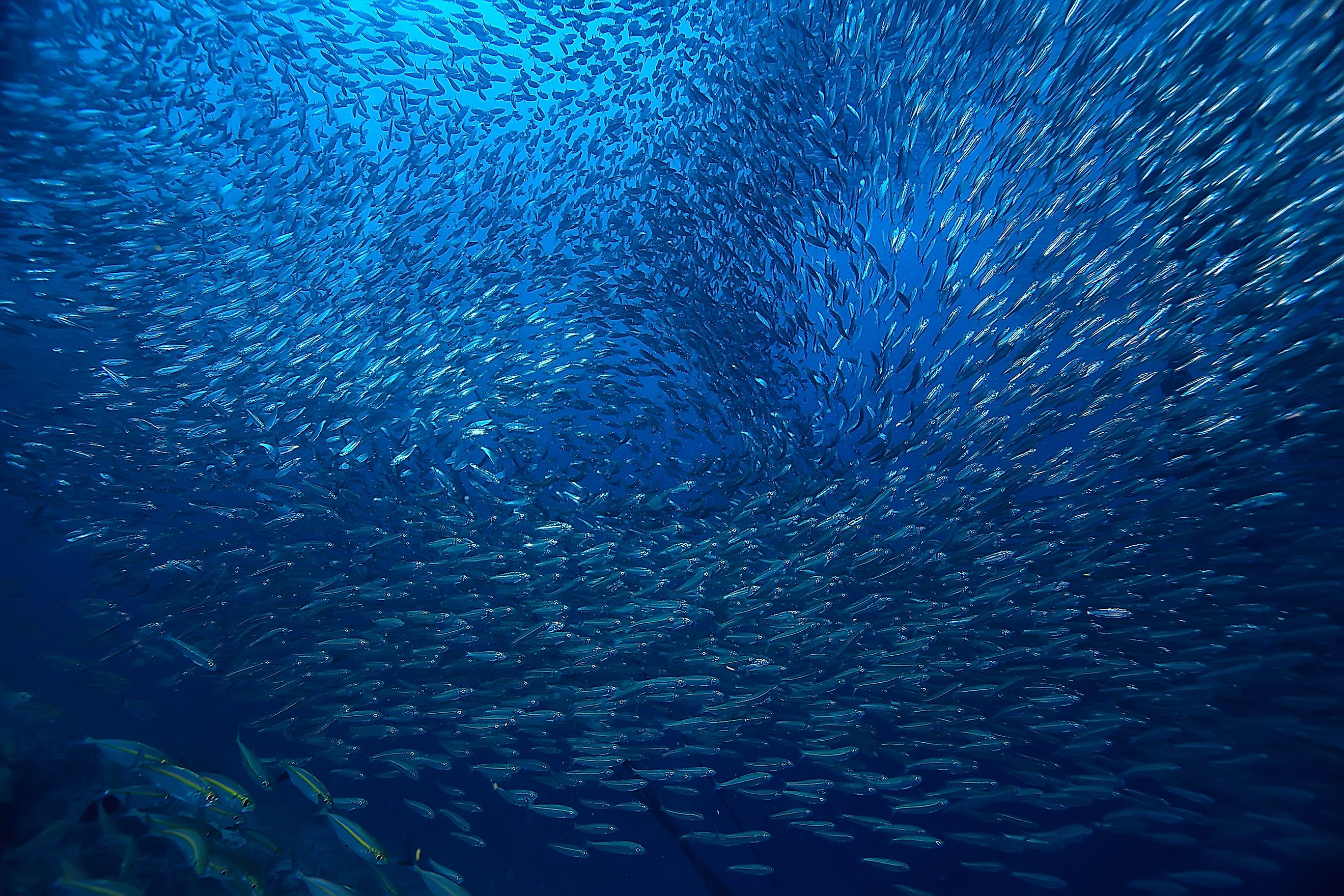
Upwellings
Upwelling refers to an oceanographic phenomenon that includes the wind-driven movement of cool, nutrient-rich, dense waters from deeper ocean depths toward the ocean surface to replace the warm, nutrient-depleted surface water. The nutrient-rich cold water brought to the surface by this process stimulates the growth and reproduction of phytoplankton – the primary producers in the ocean food web. Upwelling occurs in five major zones on Earth, which occupy a mere 5% of the total ocean area but account for approximately 25% of the global marine fish catch. The upwelling zones can be identified by significantly high concentrations of chlorophyll-a and cooler sea surface temperatures due to the biomass of the phytoplankton and cooler waters in these regions. It is to be noted that the vast open ocean and coastal currents which drive upwelling have a major influence on the nutrient-rich waters and global fishery production.
Mechanisms Causing Upwelling
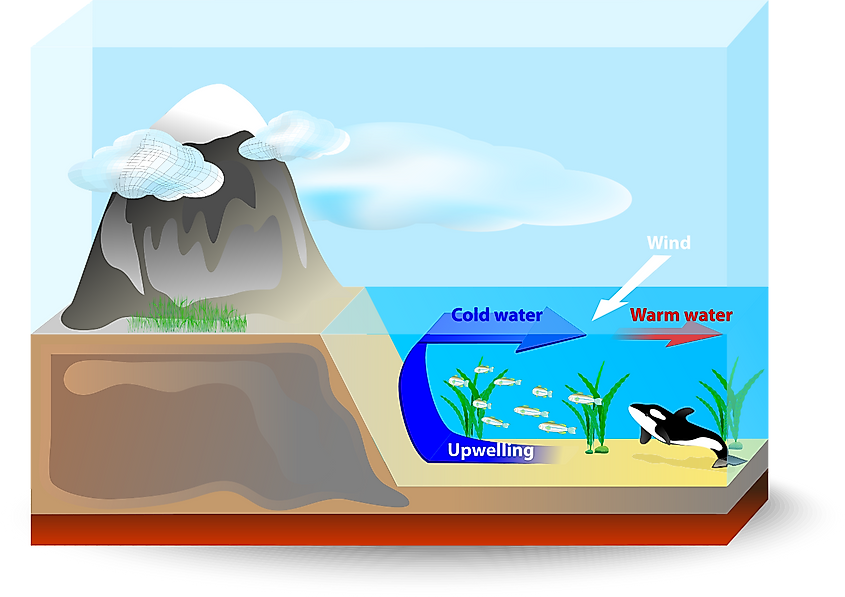
Upwelling is caused by the combined interaction of three main factors: surface winds, Ekman transport, and Coriolis force. Although these three factors work differently for the different upwelling types, the overall general effect is similar. During the upwelling process, the winds blow in a definite direction across the sea surface, causing the water to mix with the winds. The wind leads to water transportation about 90 degrees away from the direction of the flowing wind, which is mainly brought about by the Ekman transport and the Coriolis forces.
The Ekman transport leads to the movement of the water layer on the surface about 45 degrees away from the wind direction. This water movement causes friction between the topmost layer and the layer under it, resulting in the movement of the successive layers in the same direction as the top layer. The Coriolis force is the principal factor that decides the direction of water movement. In the Northern Hemisphere, the water is moved to the right of the wind direction, whereas in the Southern Hemisphere, the water is transferred to the left of the wind direction.
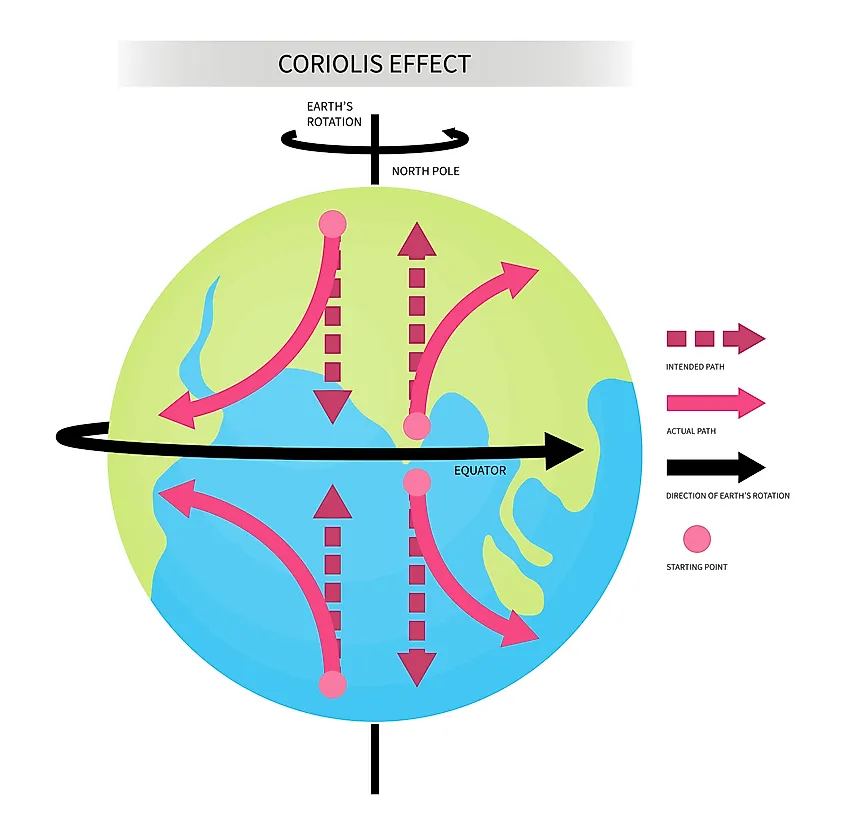
The Coriolis forces are also responsible for causing upwelling in the open oceans located close to the Equator. The Trade winds that move from 30 degrees latitude toward the Equator lead to upwelling as these winds move the surface water north to south while the deeper water moves upward to fill this gap. It must be noted that the wind patterns created by the slow-moving cyclones cause the movement of surface water aside, leading to upwelling just under the eye of the cyclone. This cooler water then helps in further weakening of the cyclone.
Types Of Upwelling
There are many distinctive types of upwelling, such as coastal upwelling, equatorial upwelling, large-scale wind-driven upwelling, broad-diffusive upwelling, upwelling associated with eddies, and topographically-associated upwelling. The most common types of upwelling have been discussed below:
Coastal Upwelling
This is the most well-known type of upwelling, which is closely related to human activities and supports some of the world’s most productive fisheries. Coastal upwelling occurs along the eastern parts of the great central gyres, where the direction of the flowing wind is parallel to the coastline creating wind-driven currents. The Coriolis force diverts these wind-driven currents, resulting in the transfer of water away from the shores. The deeper, colder, and denser waters then rise to replace the surface waters. Coastal upwelling occurs throughout the year in some places that are referred to as major coastal upwelling systems, whereas it takes place only during specific months of the year in other areas where it is called seasonal coastal upwelling systems. The majority of these upwelling systems have high carbon productivity and are therefore categorized as Large Marine Ecosystems.
Five significant coastal currents are present in the upwelling areas. These include Canary Current – located off the northwest coast of Africa; Benguela Current – located off the southwest coast of Africa; California Current – located off California and Oregon on the northwest coast of the United States; Humboldt Current – located off the coast of Peru and Chile; and Somali Current – located off the coast of Somalia and Oman. Coastal Upwelling is mainly seen in the areas where the four principal eastern boundary currents: the Canary Current, California Current, Benguela Current, and Humboldt Current flow.
Equatorial Upwelling
Upwellings at the Equator are greatly influenced by the Intertropical Convergence Zone, which is placed immediately to the north or south of the Equator. The easterly moving trade winds, which blow from the northeast to the southeast direction, converge along the Equator and blow westwards, creating the Intertropical Convergence Zone. Although the Coriolis forces are absent here, the trade winds create currents that are then diverted, and upwelling takes place immediately north and south of the Equator. Upwelling has been detected in the equatorial region of the Pacific Ocean, which has a significantly high concentration of phytoplankton.
Large Scale Upwelling
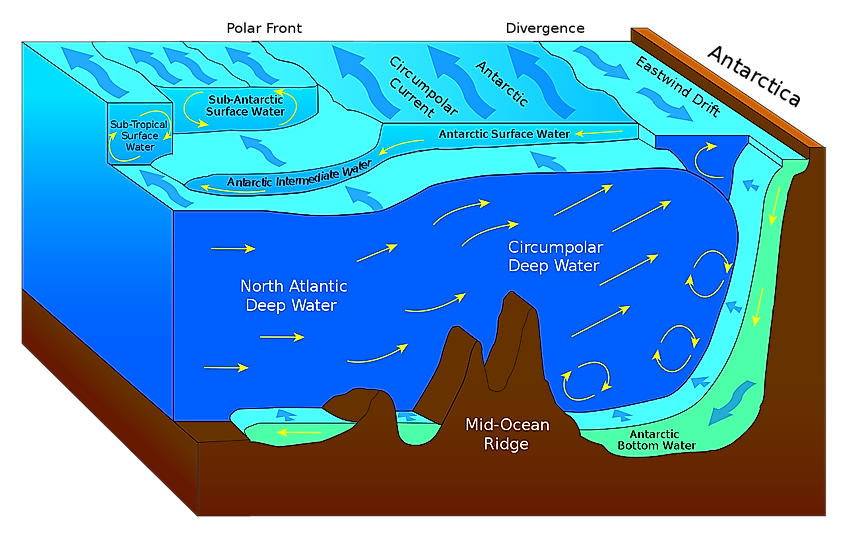
This type of upwelling is observed in the Southern Ocean, where the high-intensity westerly winds blowing around Antarctica move a significant amount of water in the northward direction. As no continental landmasses are present between the tip of the Antarctic Peninsula and South America, the water is upwelled here from greater depths. Large Scale Upwelling is linked with oceanic subtropical high-pressure circulations as seen in regions such as Northwest Africa, Southwest Africa, South Australia, Southwest Australia, and the western coasts of North and South America.
Importance Of Upwelling
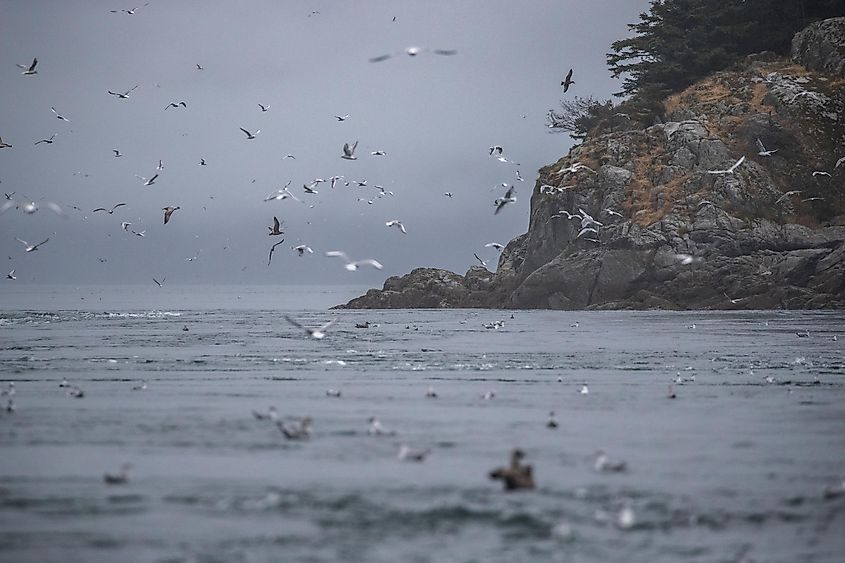
The deep ocean waters are rich in nutrients like nitrate, silicic acid, and phosphate, which in turn has been produced by the decomposition of the dead organic matter sunk down from the surface. When upwelled to the surface, these nutrient-rich waters are used by phytoplankton along with solar energy and dissolved carbon dioxide to produce organic compounds via photosynthesis. Thus, upwelling regions account for approximately 50% of global marine productivity with high levels of primary production in comparison to other ocean areas. Moreover, the growth of seaweed and plankton supported by coastal upwelling, in turn, serve as food for various pelagic fish, seabirds, and aquatic mammals. Although covering only 1% of the ocean surface, the coastal upwelling regions account for more than 50% of the world’s fishery landings.
A strong upwelling event is often responsible for the long-distance movement of larvae produced by marine fish and invertebrates away from their natural habitat, endangering their survival. The cold, nutrient-rich water which upwells makes the sea surface temperature cooler and absorbs a high amount of excess carbon from the atmosphere. The air just above it further cools down and condensates resulting in the formation of low-level clouds and sea fog. Cities like San Francisco, Walvis Bay, Antofagasta, and many more are affected by the strong upwelling regimes.
Threats To Upwelling
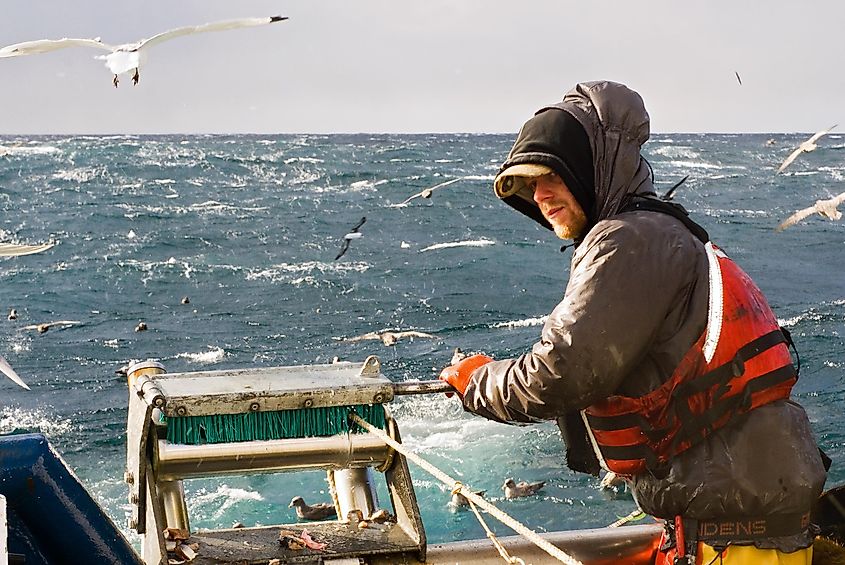
Commercial fishing activities pose a severe threat to the entire upwelling ecosystem. A large number of commercial fishers are attracted to the upwelling regions as they are the world’s most productive and species-rich regions. Thus, besides marine organisms, the upwelling regions also serve as an important source of food and sustenance for many people. It is to be noted that, similar to other ecosystems, every species present in the upwelling ecosystem is critical to the functioning of this ecosystem. Therefore, even if a single species is removed, it will have a profound effect on the rest of the trophic levels. Thus, the fisheries in the upwelling regions face the possibility of an “ecosystem collapse.” The lowering in the population of a species due to fisheries results in a decrease in genetic diversity and subsequent loss of biodiversity.
In addition, the El Nino Southern Oscillation poses a serious threat to the productivity of upwelling ecosystems. During El Nino events, the weak trade winds lead to decreased equatorial upwelling. This results in a drastic decrease in global upwelling and decreased productivity as nutrient-rich waters are no longer upwelled. Without the vital nutrients, the rest of the ecological pyramid of upwelling ecosystems cannot be sustained and will eventually lead to an ecosystem collapse.










